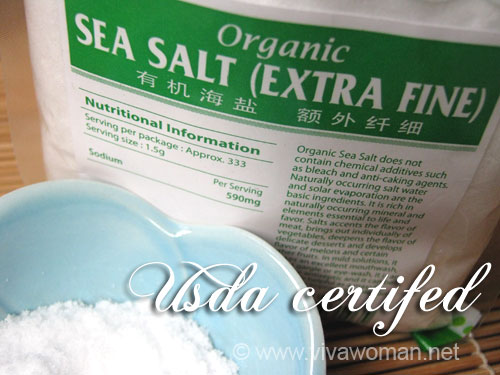
Posted on 05/10/2015 4:29:37 PM PDT by 2ndDivisionVet
n a Mediterranean beach 10 miles south of Tel Aviv, Israel, a vast new industrial facility hums around the clock. It is the world’s largest modern seawater desalination plant, providing 20 percent of the water consumed by the country’s households. Built for the Israeli government by Israel Desalination Enterprises, or IDE Technologies, at a cost of around $500 million, it uses a conventional desalination technology called reverse osmosis (RO). Thanks to a series of engineering and materials advances, however, it produces clean water from the sea cheaply and at a scale never before achieved.
Worldwide, some 700 million people don’t have access to enough clean water. In 10 years the number is expected to explode to 1.8 billion. In many places, squeezing fresh water from the ocean might be the only viable way to increase the supply.
The new plant in Israel, called Sorek, was finished in late 2013 but is just now ramping up to its full capacity; it will produce 627,000 cubic meters of water daily, providing evidence that such large desalination facilities are practical. Indeed, desalinated seawater is now a mainstay of the Israeli water supply. Whereas in 2004 the country relied entirely on groundwater and rain, it now has four seawater desalination plants running; Sorek is the largest. Those plants account for 40 percent of Israel’s water supply. By 2016, when additional plants will be running, some 50 percent of the country’s water is expected to come from desalination.

The traditional criticism of reverse-osmosis technology is that it costs too much. The process uses a great deal of energy to force salt water against polymer membranes that have pores small enough to let fresh water through while holding salt ions back. However, Sorek will profitably sell water to the Israeli water authority for 58 U.S. cents per cubic meter (1,000 liters, or about what one person in Israel uses per week), which is a lower price than today’s conventional desalination plants can manage. What’s more, its energy consumption is among the lowest in the world for large-scale desalination plants.
The Sorek plant incorporates a number of engineering improvements that make it more efficient than previous RO facilities. It is the first large desalination plant to use pressure tubes that are 16 inches in diameter rather than eight inches. The payoff is that it needs only a fourth as much piping and other hardware, slashing costs. The plant also has highly efficient pumps and energy recovery devices. “This is indeed the cheapest water from seawater desalination produced in the world,” says Raphael Semiat, a chemical engineer and desalination expert at the Israel Institute of Technology, or Technion, in Haifa. “We don’t have to fight over water, like we did in the past.” Australia, Singapore, and several countries in the Persian Gulf are already heavy users of seawater desalination, and California is also starting to embrace the technology (see “Desalination Out of Desperation”). Smaller-scale RO technologies that are energy-efficient and relatively cheap could also be deployed widely in regions with particularly acute water problems—even far from the sea, where brackish underground water could be tapped.
Earlier in development are advanced membranes made of atom-thick sheets of carbon, which hold the promise of further cutting the energy needs of desalination plants.
My math may be wrong, but let’s walk through that. Would we say that something like tomatoes would need about 3” of water per week? Maybe this is where I’m off. But, at 3” over an acre, which is 43560 sq. ft., that’s 81,460 gallons, at the $0.002196/gallon, I come up with $180 per acre. I didn’t look at the math on the price per gallon, but I’m guessing that’s just the construction cost and doesn’t include operating costs? Is my math wrong?
Been too long since I took my water treatment classes. If they can do the RO up front before chemicals are added they could take the brine, evap out the water and sell the sea salt. :)
Desalination isn’t the only thing they’re going to have to take out of west coast water. Think those membranes will be able to filter out all the radionuclides coming out of Fukushima (and currently is devastating the wildlife all along the west coast)?
But Obama prefers savages who export nothing but death
Thanks.
At $058 per, that's about $1,500 per acre foot.
An acre of almonds (water intensive) uses about 3-4 acre ft/yr.
$5,000/yr per acre.
It would AT LEAST double the cost of almonds...and by extension, all other crops.
It takes, on average, 5,000 gallons of water to produce a pound of beef.
Of course at least 90% of that goes back into the environment at some point in that animal's lifetime. It just may not be immediately useable in California.
Good News! Joe Bastardi is predicting a VERY strong El Nino through the fall. He's expecting heavy early season rains. In California.
We better hope so.
Major, Biblical Disaster if we don't get rain this year.
"Organic, sustainable, locavore, ORGANIC sea salt" (highly toxic waste left after fresh water is removed from sea water)

(Same thing in a smaller quantity)

(BTW, that Freeper is correct. Salt is highly toxic and has been used for millennia to KILL BACTERIA WHICH CAUSE FOOD TO SPOIL!)
“Is the salt concentration lower in the Med than in the oceans? Does desal work better there or would it be about the same?”
I assume you jest...I was looking for the /s tag.
Just think of how much water could be supplied to the smelt!
I was asking because I didn’t know the salinity difference between the Med and the open ocean.
“I don’t know anything, so I can’t say he’s wrong. But I guess Israel thinks he is.”
Dead wrong! Piss in the ocean...you have not changed the ocean.
Interesting coincidence of timing.
I got my own whole house reverse osmosis system going just last month.
Yep. Desalinization will cause global warming before the the next week is out. . . or come up with some other excuse. Just one more reason for the UN to hate Israel.
Not significant.
Cool!
No, not even close.
Sorek will profitably sell water to the Israeli water authority for 58 U.S. cents per cubic meter
...............
That works out out to $715@acre foot. The Poseidon desalination plant being built in Carlsbad California will deslinate seawater for about $2000@acre foot.
The Australians built 6 or 7 desalination plants from about 2003-2009 that produce desalinized water for 1600@acre foot.
Singapore is said to be producing desalinized water in the $500@acre foot range. Its hard to say in the case of both Singapore and Israel how much government support is behind the official numbers.
High value cash crops generally need water to be under $300@acre foot and field crops need water to be under $100@acre foot.
This will happen in time. Maybe 10-20 years. The pieces are already on the table. lftr msr thorium reactors promise to collapse the cost of energy. There are experimental membranes that allow the water to pass through them at room temperature and pressure. There are technologies available which turn Na and Cl into a profit center instead of a cost center. Material research is yielding materials that are ever more resistant to the corrosive effects of salt water.
These technologies will someday come together. And the planet will be radically changed. Because cheap desalinized water and transport will effectively turn the deserts green and double the size of the habitable earth.
California used to understand water and plan ahead for decades. The last governor who did that was Jerry Brown’s dad Pat. Jerry just thinks of vain things like Bullet trains snail darters.
Maybe the current drought will slap some sense into the genius inventors of silicon valley as to the true priorities of California.
Someone might tell Elon Musk that the way to the deserts of Mars leads through the deserts of California.
Don’t know about that, but Aruba has had a large desalinization plant for years, providing wonderful, germ-free, potable water to the entire island, and then the (Dutch) gubmint makes money selling the salt that results from the process. The Jews are very intelligent and clever, but the Dutch are no slouches, either.
But the plant was built atop the only known habitat of the Green Creek Rat Flea.
Disclaimer: Opinions posted on Free Republic are those of the individual posters and do not necessarily represent the opinion of Free Republic or its management. All materials posted herein are protected by copyright law and the exemption for fair use of copyrighted works.